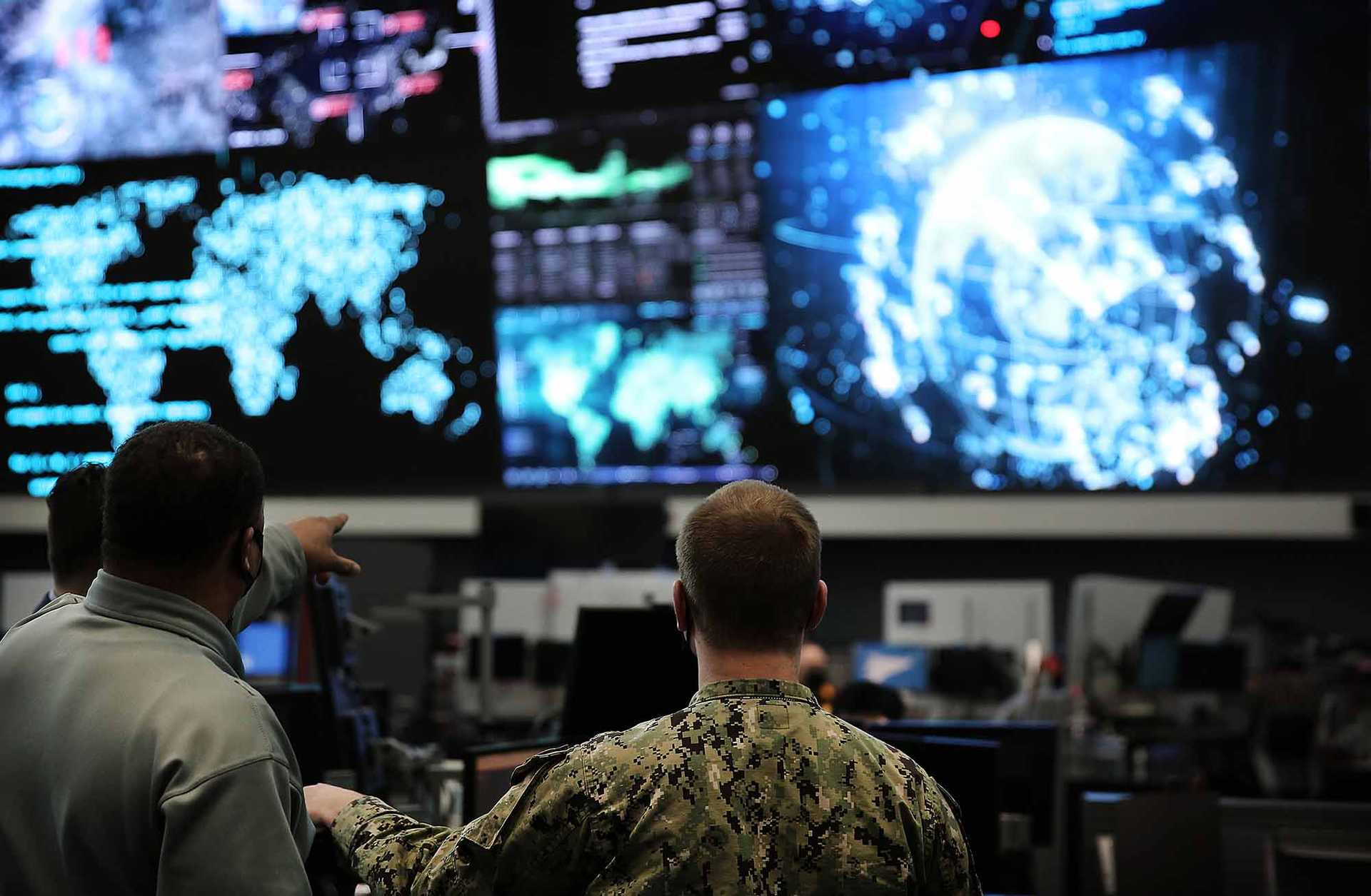
Above: U.S. Cyber Command members work in the Integrated Cyber Center at Fort George G. Meade, Maryland on 2 April, 2021.
Photo: Josef Cole / Public domain. Source: U.S. Department of Defense
Cyber Conflict and Cyber Strategy
This learning unit introduces the hierarchy of cyber threats, describes the aggressive and defensive capabilities of various actors, and examines the international legal framework and options available to improve cyber security in military and civilian contexts.
Start learning unitChapters
Learning Objectives
Hardly a day passes without bad news from the cyber sector: Cyberattacks against state and military institutions are now almost the norm, and private individuals must be enormously wary of phishing or encryption attacks. The internet, labelled by Chancellor Merkel in 2013 as “uncharted territory”, seems to have become a conflict zone where malevolent state and non-state actors are up to mischief. The press therefore often indulges in hyperbole about “cyberwars” or “cyberattacks”. On the other hand, the worst fears of a cyber-Pearl Harbor have (so far?) not materialized. So where do we stand at the moment?
In this learning unit we try to distinguish between the different levels of cyber threats by looking at different actors capable of aggressive cyber operations. We also look at the international legal framework and the options available to make cyberspace more secure – both at the state and civilian level. After completing this learning unit, you will:
- be familiarized with the basic concepts of different cyber incidents
- understand why the cyber realm is no lawless territory from the perspective of international law
- be introduced to different state and non-state actors which might, or might not, pose a threat to cybersecurity
- comprehend limits and possibilities of arms control and disarmament in the cyber realm
- understand the specific EU policy on cybersecurity
Credits
Disclosures
Content Warning
This learning unit may contain audio-visual material or texts, which may not be suitable for all audiences.
Funding
This Learning Unit was produced with financial assistance from the European Union. The contents of this Learning Unit are however the sole responsibility of the author(s) and should under no circumstances be regarded as reflecting the position of the European Union.
External Links
The site may contain hyperlink text references (’Links’) to other sites that are offered by third parties. These Links are made available solely for the purpose of information and as an additional service for users. Only the respective operator is responsible for all content and statements on linked Internet sites. Therefore, PRIF cannot guarantee the correctness and accuracy or any other aspect of third party sites.
Preferred Citation
Niklas Schoernig and Tommaso de Zan, "Cyber Conflict and Cyber Strategy" in EUNPDC eLearning, ed. Niklas Schörnig, Peace Research Institute Frankfurt. Available at https://eunpdc-elearning.netlify.app/lu-19/, last modified 11 November 2024

